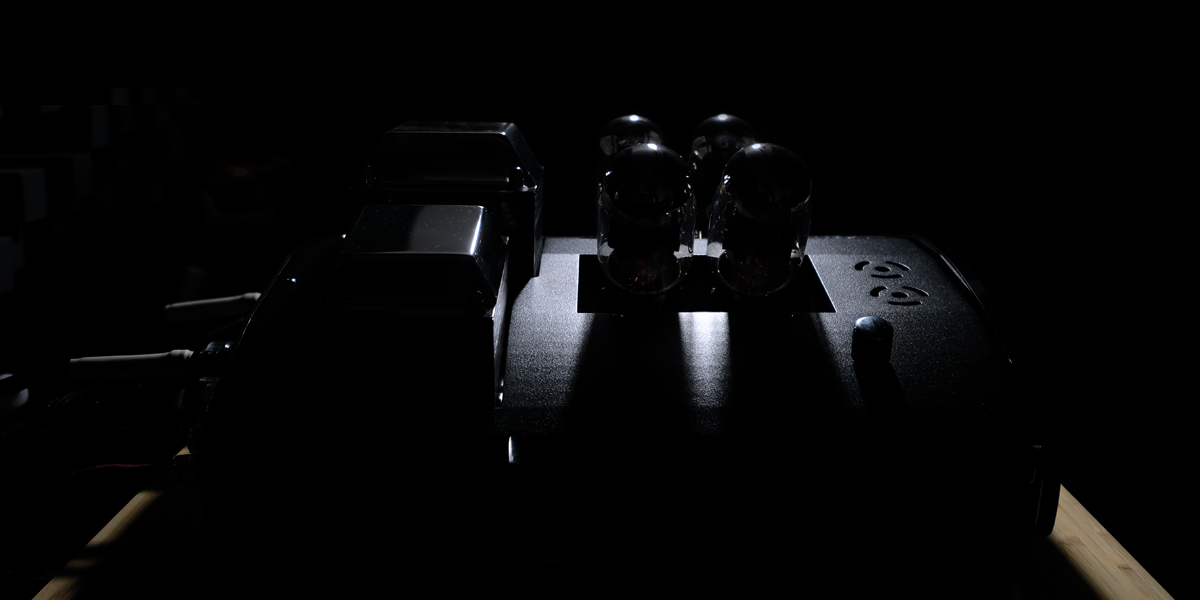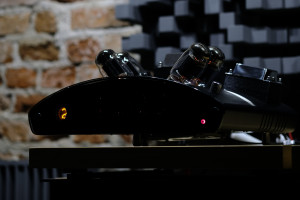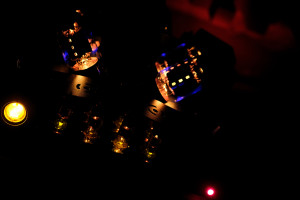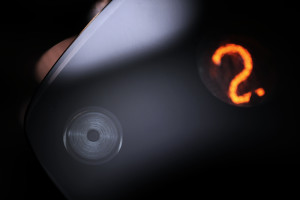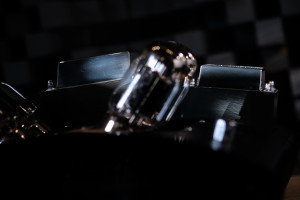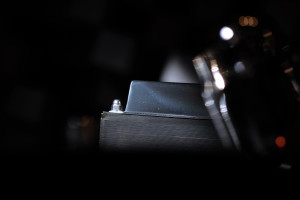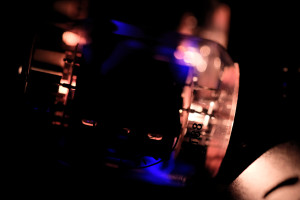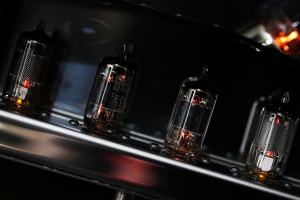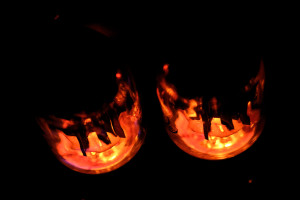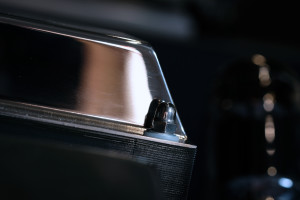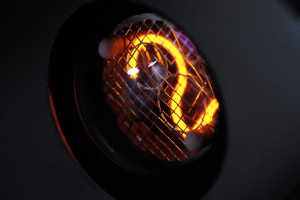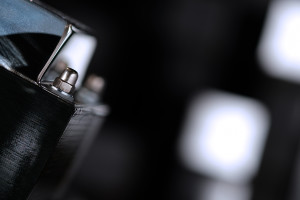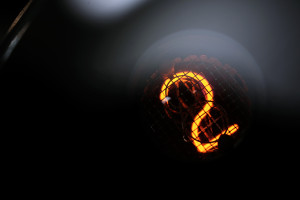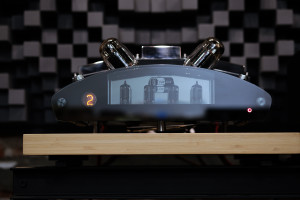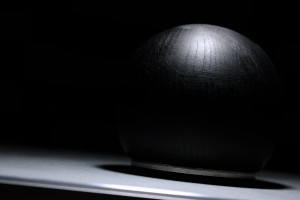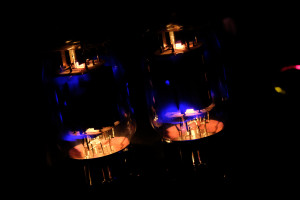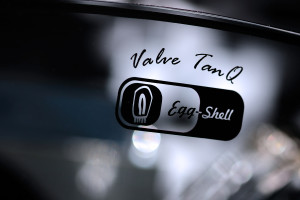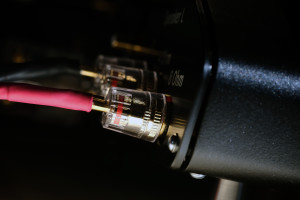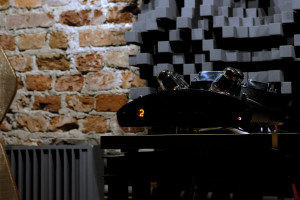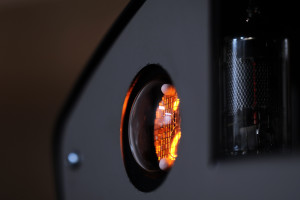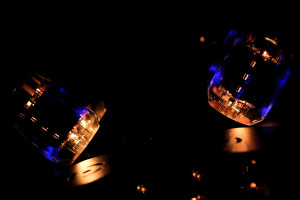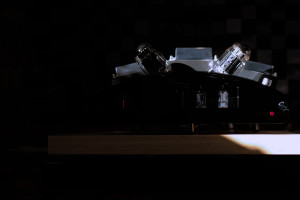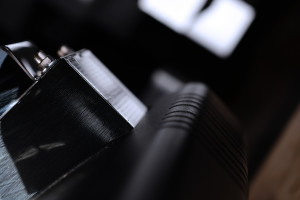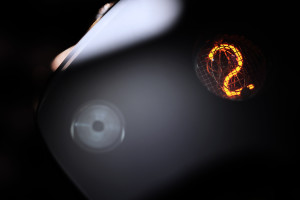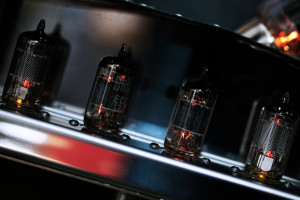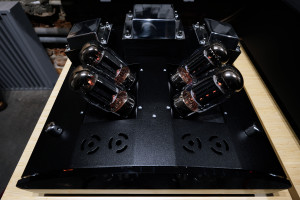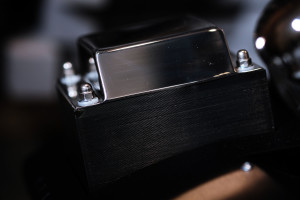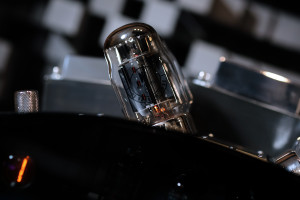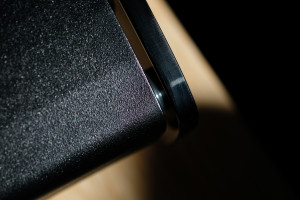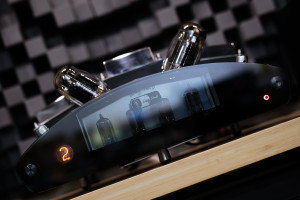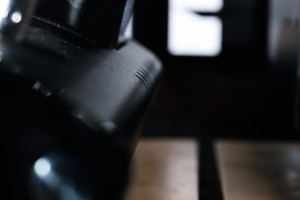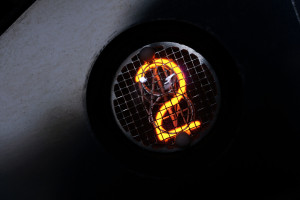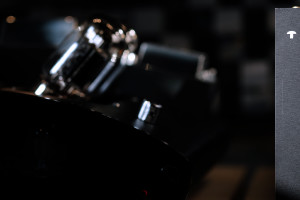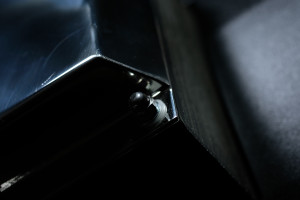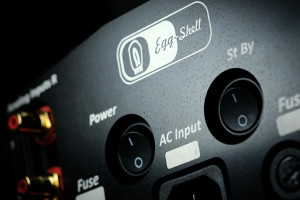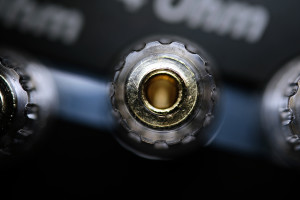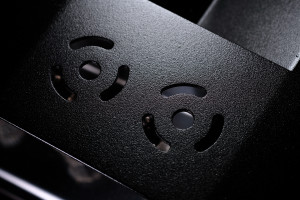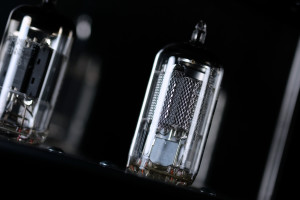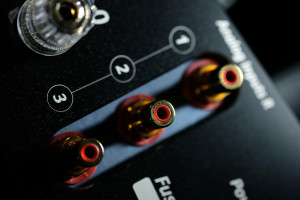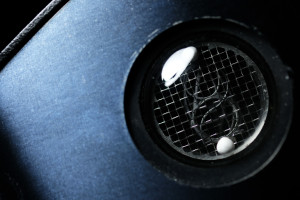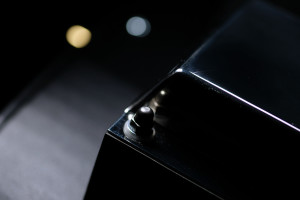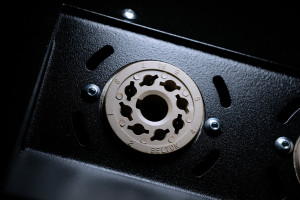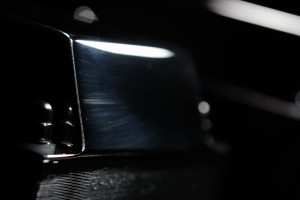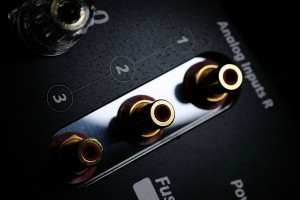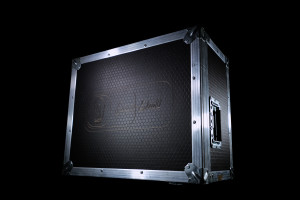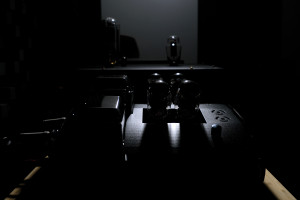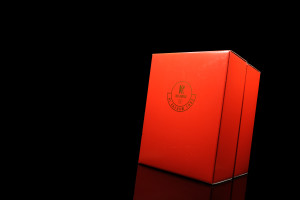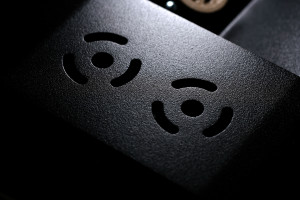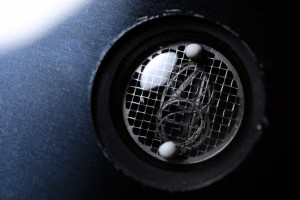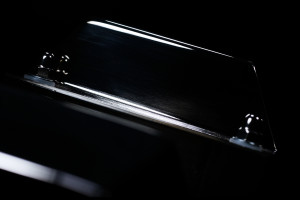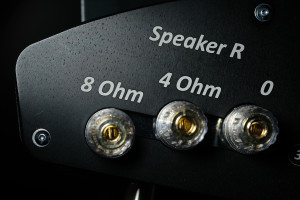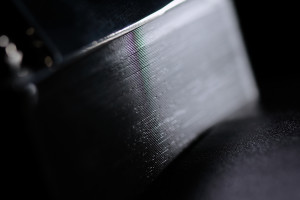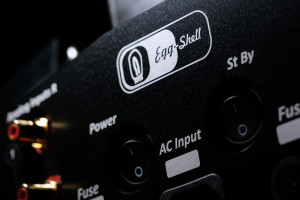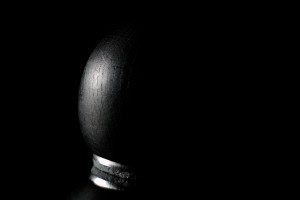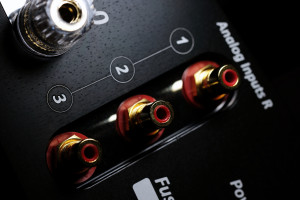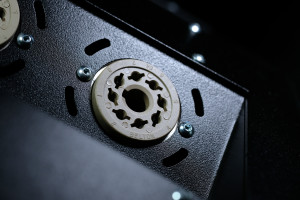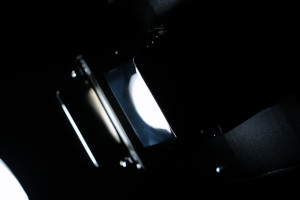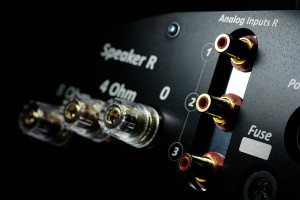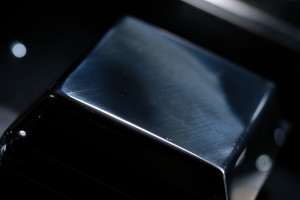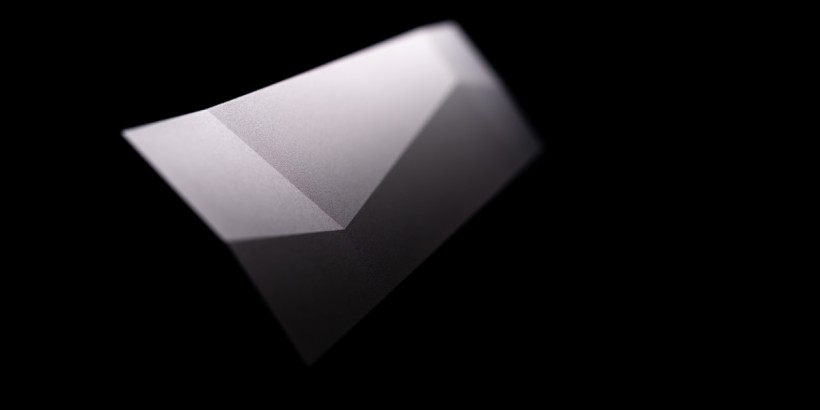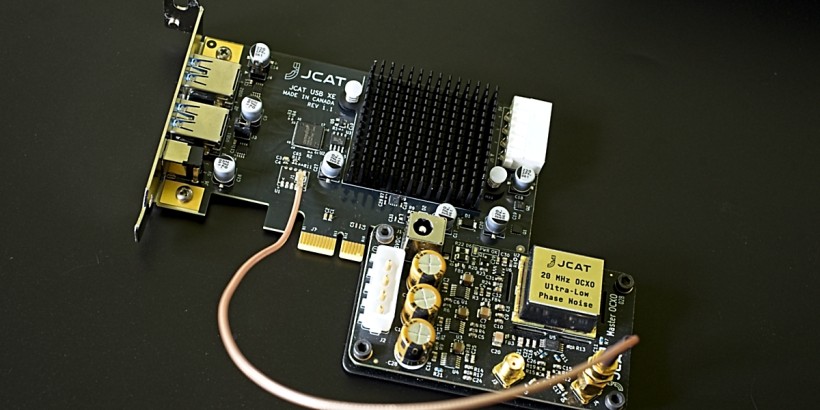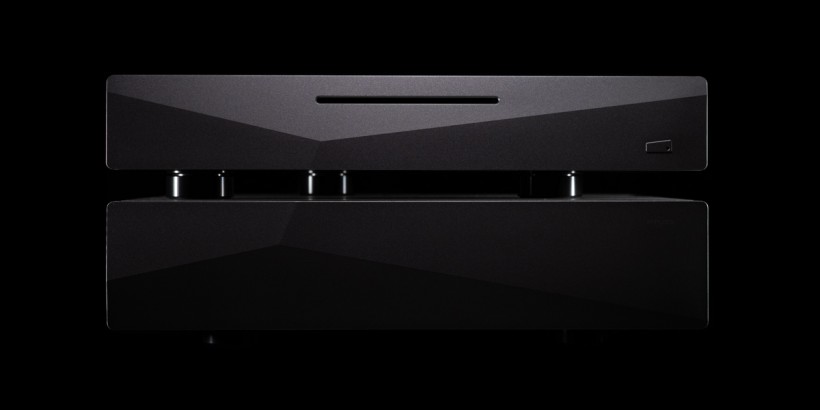It’s been a bit more than two years already since the last Egg-Shell publication here. Time surely goes by fast, but the two brothers behind this brand – Krzysztof and Andrzej Grabowscy – clearly had their hands full. This review’s Egg-Shell TanQ is their latest and the most prestigious effort to date. Enjoy!
Introduction
Since it’s been a while, let us remind ourselves who the two gents behind today’s main dish are. Krzysztof is not only the owner of the Encore Seven operation, but a true multitasking man into co-organizing live gigs, associated photography, pro audio hardware and business related projects. Unique and recognizable visuals of each machine released under the Egg-Shell flag are his work as well, whereas his brother is a self-taught engineer brain into R&D. As far as legal connections go, Encore Seven handled by Krzysztof is the parent company of Andrzej’s Egg-Shell. Both establishments became commercially operational in 2012, though the latter man started his adventure originally as a side activity of DIY sort more than 25 years ago. That’s time long enough to learn a thing or two about valves and Egg-Shell Prestige 9WST Mk2 reviewed here proved me that the two men did their homework just right. Let’s fast forward to Egg-Shell’s Prestige 12.2 deck based on one KT88 per channel. This one’s been selling nicely since its launch, hence logically Krzysiek and Andrzej investigated this particular area further to end up with their Prestige 20WK later on. It went EOL but was never forgotten and many customers prevented this from happening, the demand for something similar to the very liked Prestige 12.2 yet more powerful pretty much created itself. Ask and you shall receive, as they say. However, the original idea around quad KT88 valves also involved different looks to distinguish the newcomer we now know as TanQ from any other Egg-Shell machine. The goal was to also make this one more luxurious in comparison to anything else, it was meant to be the new flagship.
Let’s fast forward to Egg-Shell’s Prestige 12.2 deck based on one KT88 per channel. This one’s been selling nicely since its launch, hence logically Krzysiek and Andrzej investigated this particular area further to end up with their Prestige 20WK later on. It went EOL but was never forgotten and many customers prevented this from happening, the demand for something similar to the very liked Prestige 12.2 yet more powerful pretty much created itself. Ask and you shall receive, as they say. However, the original idea around quad KT88 valves also involved different looks to distinguish the newcomer we now know as TanQ from any other Egg-Shell machine. The goal was to also make this one more luxurious in comparison to anything else, it was meant to be the new flagship.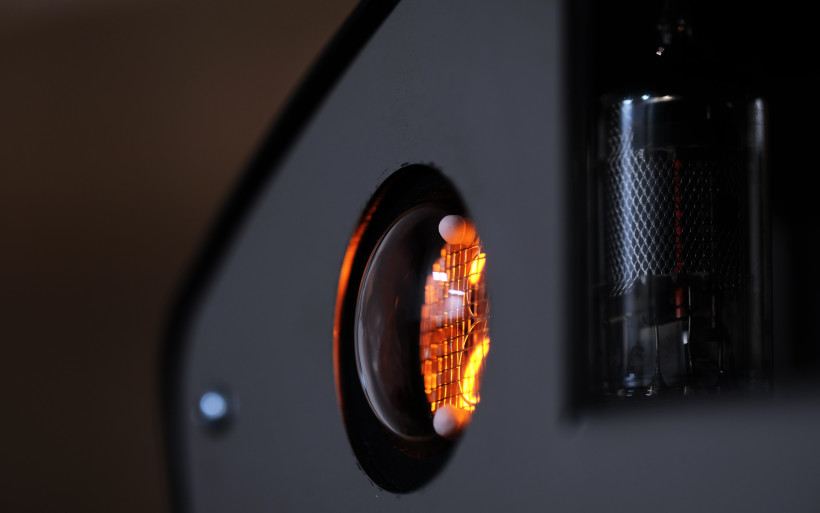 The decision to exploit a fair chunk of Egg-Shell’s own tech already down pat, properly field-tested and suitable for the TanQ project was obvious. That’s why today’s affair shares several aspects with the Prestige range’s models labeled as 12.2, 9.3 and 15.3. However, Egg-Shell’s latest deck was the longest one in development; the first prototype debuted as early as during local Audio Video Show in November 2015, has changed significantly over the years and was officially launched just recently, in 2019. The machine’s name itself leaves no room for guesswork; TanQ reads just as the ‘tank’ word would, whereas the distinctive Q twist is meant to indicate quality and somewhat limit/mitigate obvious warfare connotations.
The decision to exploit a fair chunk of Egg-Shell’s own tech already down pat, properly field-tested and suitable for the TanQ project was obvious. That’s why today’s affair shares several aspects with the Prestige range’s models labeled as 12.2, 9.3 and 15.3. However, Egg-Shell’s latest deck was the longest one in development; the first prototype debuted as early as during local Audio Video Show in November 2015, has changed significantly over the years and was officially launched just recently, in 2019. The machine’s name itself leaves no room for guesswork; TanQ reads just as the ‘tank’ word would, whereas the distinctive Q twist is meant to indicate quality and somewhat limit/mitigate obvious warfare connotations.
Build
The product arrived dressed in a very nice flightcase engraved with a large manufacturer’s logo. Precisely cut foam forms held the main dish tightly. I was able to handle the cargo singlehandedly, albeit with some struggle involved; its measurements were manageable, though mass introduced some challenge. The loaner was delivered along with Egg-Shell’s Prestige RCX RC. This wooden ball has no moving parts inside and, due to a gyroscope on-board, it needs to be aligned in perfectly horizontal position to be used. That’s not a case of faulty design but one cleverly thought preventive measure. If dropped, the sphere won’t communicate with TanQ, hence attenuation won’t follow.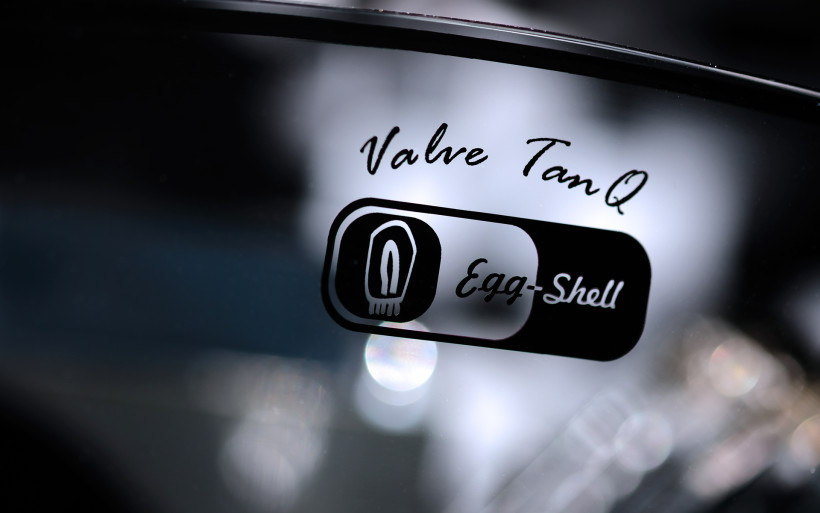 Flightcases can be used multiple times, equipped with handles are far easier to carry around than cardboards and are a superior solution in general. Once TanQ’s ask factors in, its packaging scheme is way above the average industry standard, that’s a given. Flagship or not, this item’s price isn’t ridiculous and that fancy box it arrived in makes potential purchase this much sweeter. However, one has to take into account that Egg-Shell’s latest is sold without valves. KR Audio’s glass was delivered in a separate box and as such is a non-standard addition.
Flightcases can be used multiple times, equipped with handles are far easier to carry around than cardboards and are a superior solution in general. Once TanQ’s ask factors in, its packaging scheme is way above the average industry standard, that’s a given. Flagship or not, this item’s price isn’t ridiculous and that fancy box it arrived in makes potential purchase this much sweeter. However, one has to take into account that Egg-Shell’s latest is sold without valves. KR Audio’s glass was delivered in a separate box and as such is a non-standard addition. Egg-Shell TanQ is a fully analogue integrated valve amplifier free from any digital shenanigans. This purist affair is quite similar to Ayon’s Scorpio deck reviewed here several weeks back, but common denominators between both amps don’t end here. TanQ is a single-ended pure Class A machine based on four KT88 valves in total; two per channel in parallel, fixed in the triode mode. As far as specs go, this deck’s outputs deliver 20wpc into 8Ω, its FR starts at 20Hz and goes up to 20kHz (+/- 3dB) and power consumption is 350/85W in on/standby mode respectively. The product measures (WxDxH) 40x39x19cm and weighs healthy 25 kilograms, just as a valve affair this powerful often does.
Egg-Shell TanQ is a fully analogue integrated valve amplifier free from any digital shenanigans. This purist affair is quite similar to Ayon’s Scorpio deck reviewed here several weeks back, but common denominators between both amps don’t end here. TanQ is a single-ended pure Class A machine based on four KT88 valves in total; two per channel in parallel, fixed in the triode mode. As far as specs go, this deck’s outputs deliver 20wpc into 8Ω, its FR starts at 20Hz and goes up to 20kHz (+/- 3dB) and power consumption is 350/85W in on/standby mode respectively. The product measures (WxDxH) 40x39x19cm and weighs healthy 25 kilograms, just as a valve affair this powerful often does.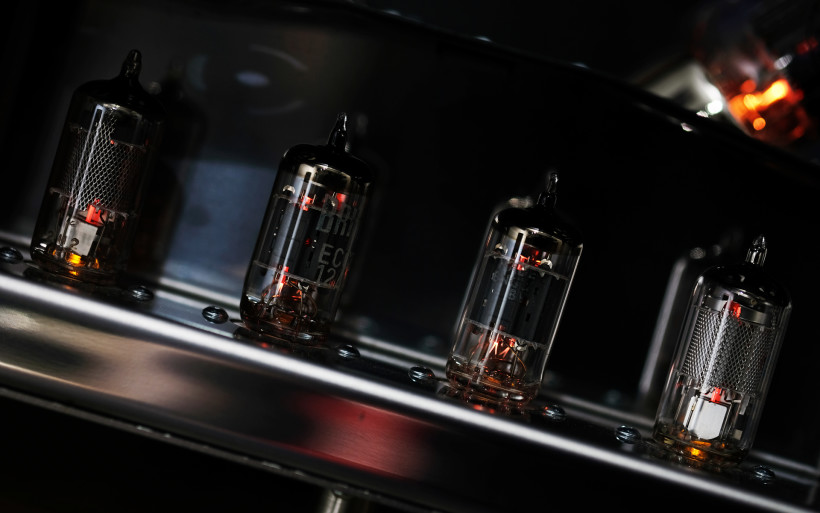 Here it’s worth to point out that Ayon’s smallest integrated was similarly big, based on quad KT88 beam tetrodes, partially also of SE topology plus Class A bias and had valves in its preamp stage. However, it offered two distinctively different operation modes (pentode/triode in push-pull/Class A respectively), exploited no feedback at all and sported Ayon’s proprietary auto-bias circuitry aka AFB. TanQ is different; it has some feedback and its KT88s used as triodes exclusively are subject neither to regulated nor automatic bias but matched cathode resistors instead. Put shortly, Krzysiek and Andrzej were after magic associated with triodes and power output sufficient enough to handle many different loads comfortably at a cost of lesser flexibility.
Here it’s worth to point out that Ayon’s smallest integrated was similarly big, based on quad KT88 beam tetrodes, partially also of SE topology plus Class A bias and had valves in its preamp stage. However, it offered two distinctively different operation modes (pentode/triode in push-pull/Class A respectively), exploited no feedback at all and sported Ayon’s proprietary auto-bias circuitry aka AFB. TanQ is different; it has some feedback and its KT88s used as triodes exclusively are subject neither to regulated nor automatic bias but matched cathode resistors instead. Put shortly, Krzysiek and Andrzej were after magic associated with triodes and power output sufficient enough to handle many different loads comfortably at a cost of lesser flexibility.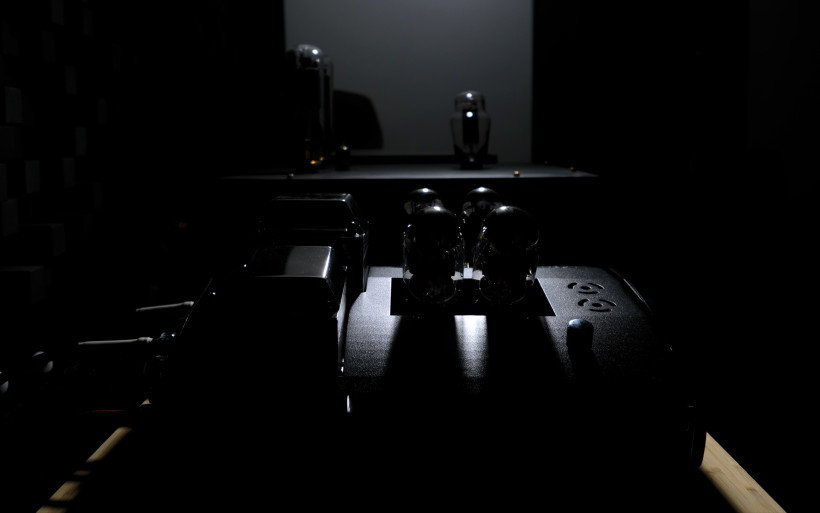 It’s very clear that Egg-Shell TanQ is not a regular looker. Truth told, all products by this local audio establishment ain’t, but its latest effort upped the ante significantly on this count. Variety is the spice of life, innit? Krzysztof responsible for TanQ’s visuals wanted to create something pleasing to the eye, distinctive enough to be labeled as original and these goals he achieved if someone asks me. In a way, today’s hero looks like a regular valve deck; it’s loaded with glass, sports naked transformers and is sufficiently big and heavy to be viewed as serious. However, to somewhat defy current audio trends, its enclosure is not based on thick aluminium plates full of 90-degree angles but one heavily rounded, powder-coated and far thinner sheet of the same material married to the steel base. Let’s add Egg-Shell’s signature V-shaped valve alignment extended to have transformers tilted as well, everything up top fully exposed and presto, a looker you won’t see every other day is the effect.
It’s very clear that Egg-Shell TanQ is not a regular looker. Truth told, all products by this local audio establishment ain’t, but its latest effort upped the ante significantly on this count. Variety is the spice of life, innit? Krzysztof responsible for TanQ’s visuals wanted to create something pleasing to the eye, distinctive enough to be labeled as original and these goals he achieved if someone asks me. In a way, today’s hero looks like a regular valve deck; it’s loaded with glass, sports naked transformers and is sufficiently big and heavy to be viewed as serious. However, to somewhat defy current audio trends, its enclosure is not based on thick aluminium plates full of 90-degree angles but one heavily rounded, powder-coated and far thinner sheet of the same material married to the steel base. Let’s add Egg-Shell’s signature V-shaped valve alignment extended to have transformers tilted as well, everything up top fully exposed and presto, a looker you won’t see every other day is the effect.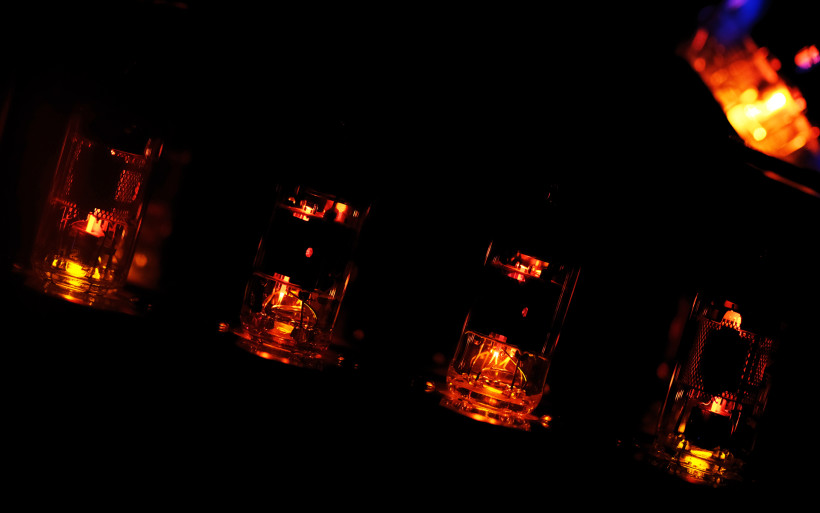 Large thick glass cover found on TanQ’s front held via two magnets is a proper finger magnet itself. This easily removable piece uncovers a small compartment with two EF86 input and the same number of ECC83 driver tubes, all surrounded via glossy steel walls to net mirror-alike effect. One Nixie tube on the left indicates currently used input, whereas the red ring on the far right side informs one about the machine’s readiness. The glass surface sports the Egg-Shell logo and is smoked black where it needs to be. The overall view’s really nice.
Large thick glass cover found on TanQ’s front held via two magnets is a proper finger magnet itself. This easily removable piece uncovers a small compartment with two EF86 input and the same number of ECC83 driver tubes, all surrounded via glossy steel walls to net mirror-alike effect. One Nixie tube on the left indicates currently used input, whereas the red ring on the far right side informs one about the machine’s readiness. The glass surface sports the Egg-Shell logo and is smoked black where it needs to be. The overall view’s really nice. The machine up top looks interesting. The hood isn’t ideally round all across the board but slightly bent in several places to form dome alike surface. Four small openings right over preamp valves neighbour with two glossy knurled knobs; the one on the left happens to be an input selector, whereas the one on the right handles volume control. Both work nicely, feel substantial, turn smoothly and I have not a single bad thing to say about them. Moving further, two protrusions with four octal sockets by Belton are what KT88s call home, one row of extra openings per side helps with venting and a pair of output transformers with the bigger power converter in-between are next in line. All these are made by local guru Leszek Ogonowski, finished with finely polished caps and based on EI cores with 0.3mm thin annealed plates stacked.
The machine up top looks interesting. The hood isn’t ideally round all across the board but slightly bent in several places to form dome alike surface. Four small openings right over preamp valves neighbour with two glossy knurled knobs; the one on the left happens to be an input selector, whereas the one on the right handles volume control. Both work nicely, feel substantial, turn smoothly and I have not a single bad thing to say about them. Moving further, two protrusions with four octal sockets by Belton are what KT88s call home, one row of extra openings per side helps with venting and a pair of output transformers with the bigger power converter in-between are next in line. All these are made by local guru Leszek Ogonowski, finished with finely polished caps and based on EI cores with 0.3mm thin annealed plates stacked.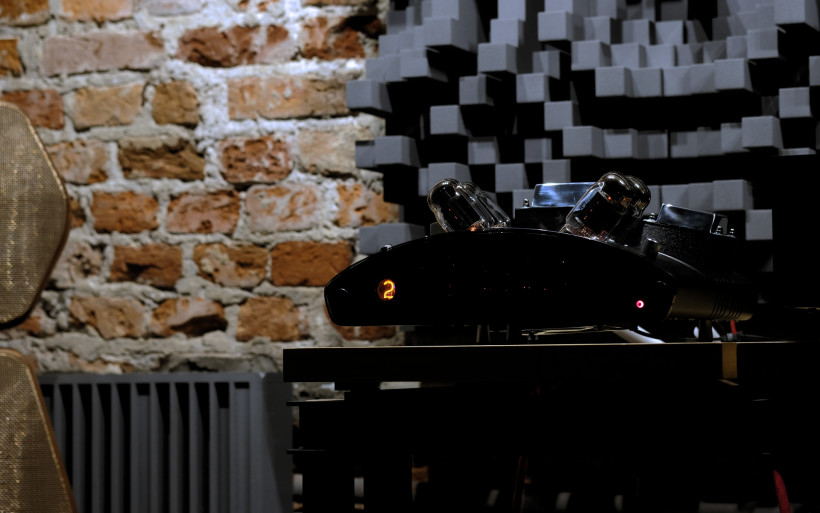 The product’s underbelly sports three tall legs, which results in visually floating effect. Their rubber washers keep the machine in place, but the most interesting part is found in-between ’em, a single 15cm wide fan by Noctua. Products by this company are used in high performance PCs meant to be not only benchmark devils but also as silent and cool as possible. The one found in TanQ is pretty much noiseless; up close and with no music on, the only sound mildly heard is moving air. Once listening starts, this fan’s contribution is far below detectable.
The product’s underbelly sports three tall legs, which results in visually floating effect. Their rubber washers keep the machine in place, but the most interesting part is found in-between ’em, a single 15cm wide fan by Noctua. Products by this company are used in high performance PCs meant to be not only benchmark devils but also as silent and cool as possible. The one found in TanQ is pretty much noiseless; up close and with no music on, the only sound mildly heard is moving air. Once listening starts, this fan’s contribution is far below detectable. My loaner’s crowded rear had everything aligned in symmetry. The AC inlet neighboured with fuses stored in separate sockets (one per channel) and two buttons a bit above; standby and power. The TanQ’s launch procedure isn’t automated but fully manual and twofold; the latter switch comes in first, then a minute later its sibling can be flipped and the shutdown sequence reverses this order. Next in line were three vertically aligned RCA inputs made by USA’s CMC and gold-plated speaker terminals with separate connections for 8- and 4Ω loads followed.
My loaner’s crowded rear had everything aligned in symmetry. The AC inlet neighboured with fuses stored in separate sockets (one per channel) and two buttons a bit above; standby and power. The TanQ’s launch procedure isn’t automated but fully manual and twofold; the latter switch comes in first, then a minute later its sibling can be flipped and the shutdown sequence reverses this order. Next in line were three vertically aligned RCA inputs made by USA’s CMC and gold-plated speaker terminals with separate connections for 8- and 4Ω loads followed.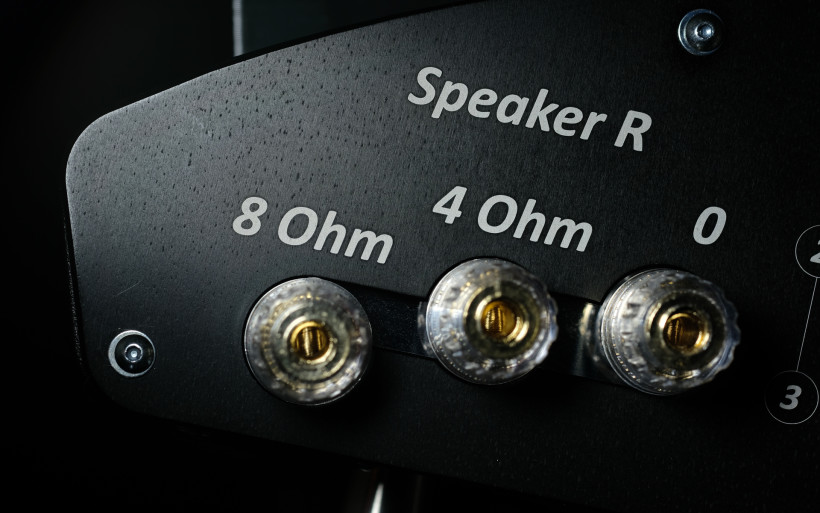 TanQ’s innards were off the table due to reasons similar to the Ayon Scorpio case, but Krzysztof kindly provided me with some knowledge here. The RC’s receiver circuit the only one mounted on a small PCB, whereas everything else inside of my loaner is assembled in good ol’ point-to-point fashion to make routes between components as short as possible. Both channels share one PSU and each sports its own choke. Output transformers were custom-made with KT88 in mind. Capacitors in signal path are polyprophylenes by Miflex and Pilkor, whereas TanQ’s PSU got JJs. Motorized ALPS potentiometer handles volume control. Fairly visible openings around transformers are there on purpose, all three units float on a frame decoupled from the base via rubber and are a bit wobbly. Just as the doctor ordered I was told, these measures are meant to reduce their microphonics.
TanQ’s innards were off the table due to reasons similar to the Ayon Scorpio case, but Krzysztof kindly provided me with some knowledge here. The RC’s receiver circuit the only one mounted on a small PCB, whereas everything else inside of my loaner is assembled in good ol’ point-to-point fashion to make routes between components as short as possible. Both channels share one PSU and each sports its own choke. Output transformers were custom-made with KT88 in mind. Capacitors in signal path are polyprophylenes by Miflex and Pilkor, whereas TanQ’s PSU got JJs. Motorized ALPS potentiometer handles volume control. Fairly visible openings around transformers are there on purpose, all three units float on a frame decoupled from the base via rubber and are a bit wobbly. Just as the doctor ordered I was told, these measures are meant to reduce their microphonics. To end this chapter, TanQ worked flawlessly just as Ayon Scorpio did several weeks back. Not a single issue emerged along the road, which was the clear indicator that today’s deck had its infancy days well in the past. It got very hot at times, but remained stable even with a load as difficult as my daily driver. TanQ scores high on fit’n’finish count, though leaves an impression of a product made by people not after industry fads but strongly focused on their own thing. Due to its mass and nice assembly, the Polish tank felt pleasantly substantial, quite luxurious and interesting in general.
To end this chapter, TanQ worked flawlessly just as Ayon Scorpio did several weeks back. Not a single issue emerged along the road, which was the clear indicator that today’s deck had its infancy days well in the past. It got very hot at times, but remained stable even with a load as difficult as my daily driver. TanQ scores high on fit’n’finish count, though leaves an impression of a product made by people not after industry fads but strongly focused on their own thing. Due to its mass and nice assembly, the Polish tank felt pleasantly substantial, quite luxurious and interesting in general.
Sound
In order to review Egg-Shell TanQ, fidata HFAS-S10U handled storage and transport duties, then LampizatOr Pacific DAC (KR Audio T-100 + KR Audio 5U4G Ltd. Ed.) took over to pass the signal to the loaner and next to either my Boenicke W8 or Martin Gateley’s soundkaos Libération. I had no other machine of topology similar to today’s amp, however Ayon Scorpio’s performance still fresh in my head was a solid starting point. To spice things up a bit and map the TanQ’s performance somewhat deeper, my Trilogy 925 was exploited this time around.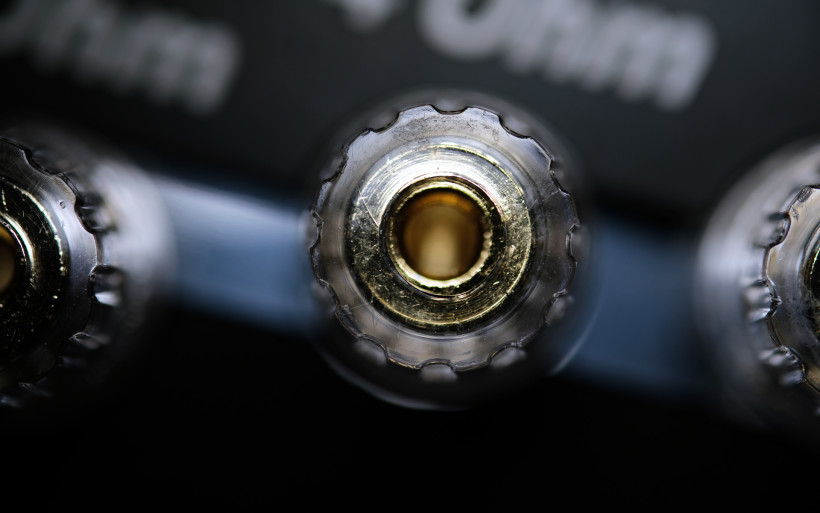 Ayon Scorpio impressed me for a number of reasons. It handled my Boenicke W8 really well, albeit exclusively in push-pull. Its second mode on the other hand kicked in where this pentode option couldn’t; the Scorpio as a triode affair complemented Martin Gateley’s dipoles very well. Two different scenarios with two very different speakers did the job in the Austrian case, yet the TanQ allowed for only one option. Truth told, the decision to take the Polish assignment was driven by fond memories of the Ayon deck with the W8 nearby and Swiss dipoles still at my place as well. These were the enablers, but in order to triangulate, more hardware was needed. Here Trilogy 925 proved to be useful simply because its performance with Martin’s adorable owls was already mapped. I knew this marriage wasn’t the best one out there, yet sufficiently supportive for today’s job. Plus, the 925 integrated is biased in Class A early on, sports very much valve alike DF, is a charmer focused on music and all these aspects turned it into an opponent far more suitable for the TanQ than i.e. Kinki Studio EX-M1.
Ayon Scorpio impressed me for a number of reasons. It handled my Boenicke W8 really well, albeit exclusively in push-pull. Its second mode on the other hand kicked in where this pentode option couldn’t; the Scorpio as a triode affair complemented Martin Gateley’s dipoles very well. Two different scenarios with two very different speakers did the job in the Austrian case, yet the TanQ allowed for only one option. Truth told, the decision to take the Polish assignment was driven by fond memories of the Ayon deck with the W8 nearby and Swiss dipoles still at my place as well. These were the enablers, but in order to triangulate, more hardware was needed. Here Trilogy 925 proved to be useful simply because its performance with Martin’s adorable owls was already mapped. I knew this marriage wasn’t the best one out there, yet sufficiently supportive for today’s job. Plus, the 925 integrated is biased in Class A early on, sports very much valve alike DF, is a charmer focused on music and all these aspects turned it into an opponent far more suitable for the TanQ than i.e. Kinki Studio EX-M1. The very first thing addressed was TanQ’s compliance with the W8, even though this experiment didn’t make much sense. 20wpc intentionally used with the Swiss? Now that was far from reasonable, the Ayon as a significantly more powerful 30wpc triode affair didn’t make it after all. That’s why it’s fair to admit that my expectations towards the TanQ/W8 combo were truly minimal at best, however the Polish machine sounded far different in comparison to the Austrian set as a triode. The result with the latter on duty suffered from all naturally big sound sources even bigger and served in flatter, quite constricted space, which was rather unusual with the inherently spacious W8.
The very first thing addressed was TanQ’s compliance with the W8, even though this experiment didn’t make much sense. 20wpc intentionally used with the Swiss? Now that was far from reasonable, the Ayon as a significantly more powerful 30wpc triode affair didn’t make it after all. That’s why it’s fair to admit that my expectations towards the TanQ/W8 combo were truly minimal at best, however the Polish machine sounded far different in comparison to the Austrian set as a triode. The result with the latter on duty suffered from all naturally big sound sources even bigger and served in flatter, quite constricted space, which was rather unusual with the inherently spacious W8.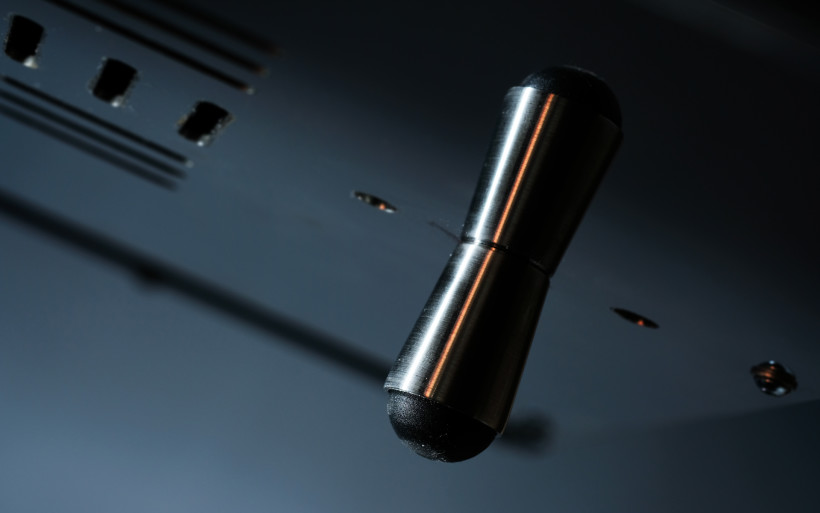 One could hear easily that the Swiss-Austrian match was a major miss. The TanQ on the other hand avoided all these drawbacks swiftly; it created image deep, wide, sufficiently airy and with all instruments and vocals outlined in civilized and not bloated fashion. “How do you know that?” one may ask and to answer I’ll simply say that my 925 behaved rather similarly on all these counts. It wasn’t voiced like the TanQ was, there were distinctive differences between these two. But the important bit is that Egg-Shell’s integrated didn’t suffer from all major drawbacks Ayon’s triode circuit introduced with my W8 and this alone was an interesting turn of events. Who knows, perhaps this happened due to KR Audio’s KT88 valves used this time around, but with no other set of four around I couldn’t tell.
One could hear easily that the Swiss-Austrian match was a major miss. The TanQ on the other hand avoided all these drawbacks swiftly; it created image deep, wide, sufficiently airy and with all instruments and vocals outlined in civilized and not bloated fashion. “How do you know that?” one may ask and to answer I’ll simply say that my 925 behaved rather similarly on all these counts. It wasn’t voiced like the TanQ was, there were distinctive differences between these two. But the important bit is that Egg-Shell’s integrated didn’t suffer from all major drawbacks Ayon’s triode circuit introduced with my W8 and this alone was an interesting turn of events. Who knows, perhaps this happened due to KR Audio’s KT88 valves used this time around, but with no other set of four around I couldn’t tell. To return the blow, the Scorpio with its push-pull circuit engaged got the same W8 job done in far feistier and more powerful way. Inherently tight grasp, shove and energy actually proved to be the key features of this deck. The same load it simply tamed far better than TanQ, which is hardly any surprise. However, the W8 experience partially showcased where the Polish integrated’s potential could potentially be. Not power, drive or fire were on the pedestal with this one, it played a substantially different game with the Swiss.
To return the blow, the Scorpio with its push-pull circuit engaged got the same W8 job done in far feistier and more powerful way. Inherently tight grasp, shove and energy actually proved to be the key features of this deck. The same load it simply tamed far better than TanQ, which is hardly any surprise. However, the W8 experience partially showcased where the Polish integrated’s potential could potentially be. Not power, drive or fire were on the pedestal with this one, it played a substantially different game with the Swiss.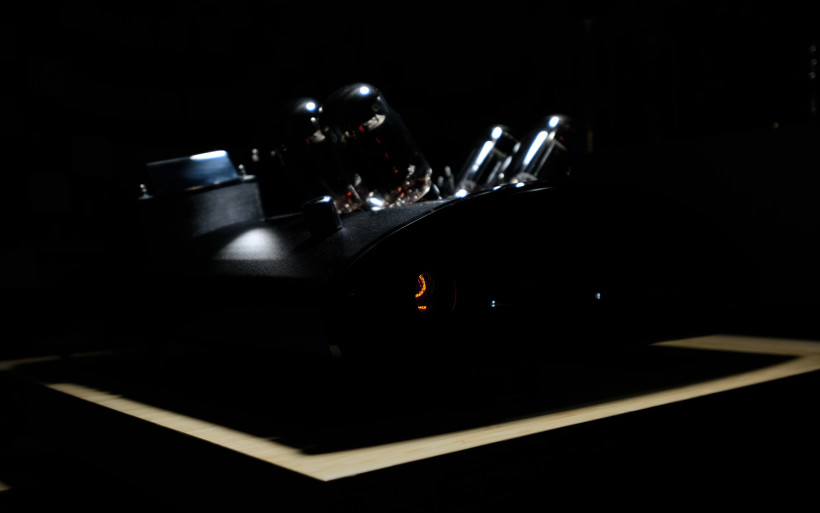 To express what I’m actually on about, the 925 sang with the petite Swiss calmly as per usual, but that distinctive substance and musical presence it does so well were constantly on. However, the sensible rumble just around the corner all time with the 925 went instantly poof after switching to the far less powerful Polish amp. The British crack was no more, however politeness, mellowness, sweetness and hauntingly dark background happened instead. The Egg-Shell was leaner, but its aim was pure pleasure injection dosed one syringe after another with no doctor around to stop the procedure. The effect? A patient heavily sedated and barely conscious yet obviously happy. A person smiling this widely has to be in a very colorful place, but exclusively with minimalist music based on female vocals and served at low volume. Once this was on, that’s where the TanQ took me, I was the lucky patient.
To express what I’m actually on about, the 925 sang with the petite Swiss calmly as per usual, but that distinctive substance and musical presence it does so well were constantly on. However, the sensible rumble just around the corner all time with the 925 went instantly poof after switching to the far less powerful Polish amp. The British crack was no more, however politeness, mellowness, sweetness and hauntingly dark background happened instead. The Egg-Shell was leaner, but its aim was pure pleasure injection dosed one syringe after another with no doctor around to stop the procedure. The effect? A patient heavily sedated and barely conscious yet obviously happy. A person smiling this widely has to be in a very colorful place, but exclusively with minimalist music based on female vocals and served at low volume. Once this was on, that’s where the TanQ took me, I was the lucky patient.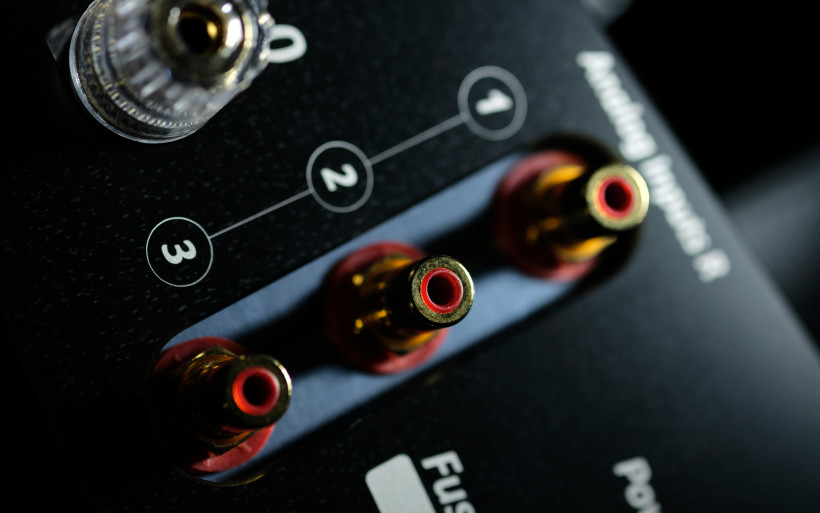 The story thus far was based solely on Boenicke W8 on duty and all exercises conducted with these particular speakers barely scratched the surface. The insight gained in the process was valuable yet limited and burdened with too many question marks to form a properly meaningful opinion. Different valves alone can introduce very different sonic results after all. However, even with such an unpleasant load as the W8, the TanQ did something very nice with live instruments, vocals and background. Further investigation was in order, albeit with far more suitable company; Martin Gateley’s owls.
The story thus far was based solely on Boenicke W8 on duty and all exercises conducted with these particular speakers barely scratched the surface. The insight gained in the process was valuable yet limited and burdened with too many question marks to form a properly meaningful opinion. Different valves alone can introduce very different sonic results after all. However, even with such an unpleasant load as the W8, the TanQ did something very nice with live instruments, vocals and background. Further investigation was in order, albeit with far more suitable company; Martin Gateley’s owls. Swiss dipoles instead of Sven’s petites changed TanQ’s input rather drastically. Now the result wasn’t polite and suave exclusively, the Polish tank showed its agile, open and insightful face. In comparison, the 925 was now the one more distant, slower and darker. Gutsier still, but its informational input was diluted and less obvious. The Brit charmed as per usual, but lacked that on-stage presence the TanQ now clearly had. The two distinctively different sound profiles clashed. The thing is, one was tailored better to serve the bigger Swiss.
Swiss dipoles instead of Sven’s petites changed TanQ’s input rather drastically. Now the result wasn’t polite and suave exclusively, the Polish tank showed its agile, open and insightful face. In comparison, the 925 was now the one more distant, slower and darker. Gutsier still, but its informational input was diluted and less obvious. The Brit charmed as per usual, but lacked that on-stage presence the TanQ now clearly had. The two distinctively different sound profiles clashed. The thing is, one was tailored better to serve the bigger Swiss.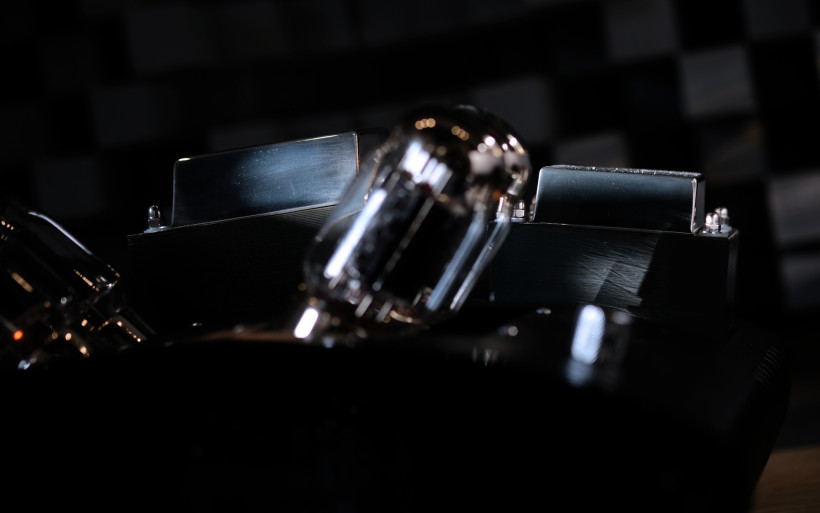 sounkaos Libération with the 925 resulted in performance polite, dreamy, distant, with events in-between both speakers strongly emphasized and the first row fairly withdrawn. I already wrote in my review of said dipoles a thing or two on the matter and nothing changed since then. In order to not make this review too long I’ll simply say that with jumpy music the needed spark and contour were missing in the 925’s performance. I appreciated substance while listening to gentle music, however edge and adrenaline essential for lively repertoire were too mild. The TanQ on the other hand delivered the full package; very big, clear and present picture full of layers, a spot on contour-to-filler ratio and topped these via very direct material voice of everything aligned in the closest line to the hot seat.
sounkaos Libération with the 925 resulted in performance polite, dreamy, distant, with events in-between both speakers strongly emphasized and the first row fairly withdrawn. I already wrote in my review of said dipoles a thing or two on the matter and nothing changed since then. In order to not make this review too long I’ll simply say that with jumpy music the needed spark and contour were missing in the 925’s performance. I appreciated substance while listening to gentle music, however edge and adrenaline essential for lively repertoire were too mild. The TanQ on the other hand delivered the full package; very big, clear and present picture full of layers, a spot on contour-to-filler ratio and topped these via very direct material voice of everything aligned in the closest line to the hot seat.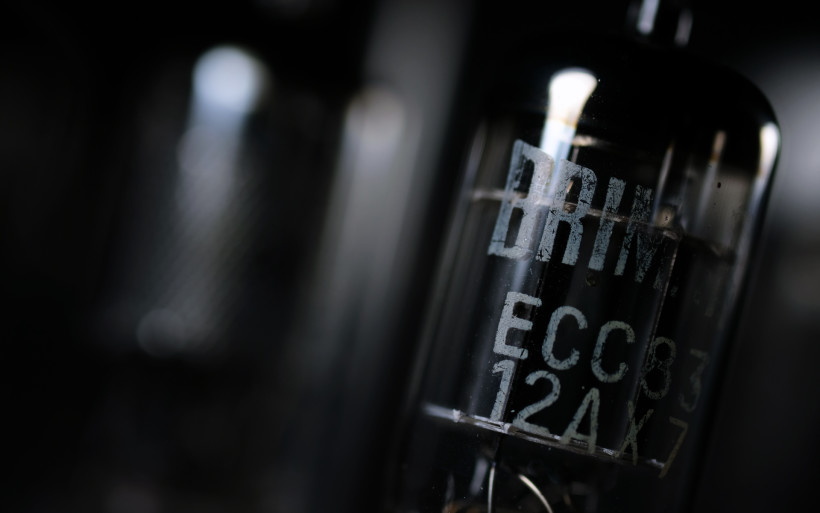 Reasons listed above witnessed for hours at some point led me to view the TanQ as a far more suitable specimen for the highly efficient Swiss dipoles than my 925. I appreciated insight the Polish deck provided and its feistiness with this load in particular. The Brit was more substantial, but the Egg-Shell packed more punch, sounded firmier, snappier, tighter and provided more slam to be mapped as the one in full control. It moved air in just the right way, the sensation of breathable vivid space at my place was on all time and this ability in particular indicated clearly that the TanQ had what it took to nail the Swiss job right. The agile part related to scale and dynamic contrasts it simply sorted good.
Reasons listed above witnessed for hours at some point led me to view the TanQ as a far more suitable specimen for the highly efficient Swiss dipoles than my 925. I appreciated insight the Polish deck provided and its feistiness with this load in particular. The Brit was more substantial, but the Egg-Shell packed more punch, sounded firmier, snappier, tighter and provided more slam to be mapped as the one in full control. It moved air in just the right way, the sensation of breathable vivid space at my place was on all time and this ability in particular indicated clearly that the TanQ had what it took to nail the Swiss job right. The agile part related to scale and dynamic contrasts it simply sorted good.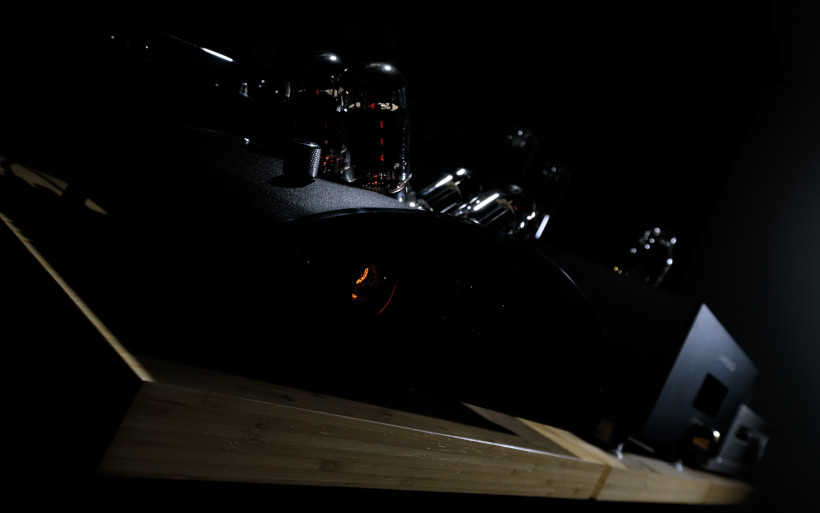 Egg-Shell TanQ also did very well as far as qualities associated with valves go. Its snappy approach went hand in hand with subtle and delicate aroma beyond reach of most transistor affairs I know. Repertoire by Björk, Mari Boine and Sofia Pfister proved me rather bluntly how capable the Polish integrated was in portraying all listed ladies’ voices. It did so in fashion natural, intimate and euphonic enough to convince me over and over again they performed just for me. Inherent insight of this amplifier mixed with its ability to single out individual sound sources and the closest ones to serve up close and admirably tangibly got my vote. Again, on this specific count the 925 was far more distant and withdrawn and TanQ repeated the stunt with strings and big drums served live as well. Witnessing how easily all these instruments detached themselves from speakers to form on-stage grandeur of various complexity was a true treat. The Brit was more orderly and uniform in this regard, whereas today’s machine wilder, more open and free yet not shouty, sharp or unpleasant while doing so. All things considered, quite the metamorphosis happened with TanQ past swapping from one Swiss tool to another.
Egg-Shell TanQ also did very well as far as qualities associated with valves go. Its snappy approach went hand in hand with subtle and delicate aroma beyond reach of most transistor affairs I know. Repertoire by Björk, Mari Boine and Sofia Pfister proved me rather bluntly how capable the Polish integrated was in portraying all listed ladies’ voices. It did so in fashion natural, intimate and euphonic enough to convince me over and over again they performed just for me. Inherent insight of this amplifier mixed with its ability to single out individual sound sources and the closest ones to serve up close and admirably tangibly got my vote. Again, on this specific count the 925 was far more distant and withdrawn and TanQ repeated the stunt with strings and big drums served live as well. Witnessing how easily all these instruments detached themselves from speakers to form on-stage grandeur of various complexity was a true treat. The Brit was more orderly and uniform in this regard, whereas today’s machine wilder, more open and free yet not shouty, sharp or unpleasant while doing so. All things considered, quite the metamorphosis happened with TanQ past swapping from one Swiss tool to another.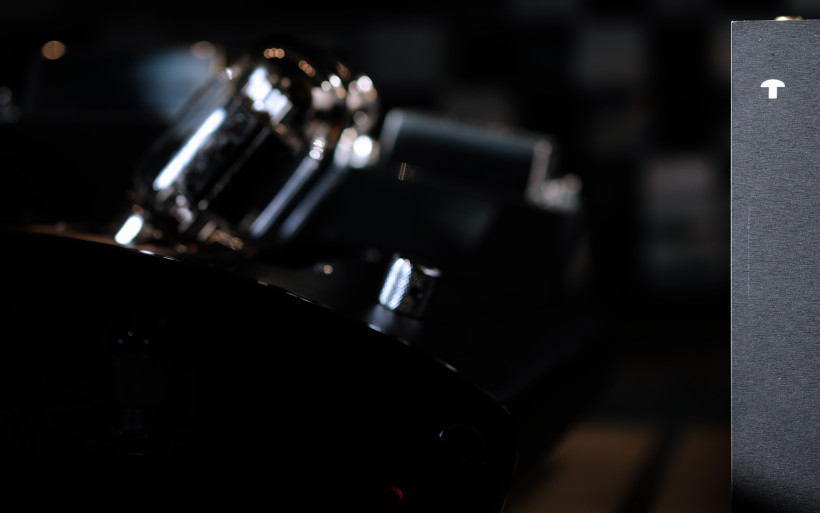 So there you have it. From shy, diluted, fairly small and polite, the Polish deck eventually flourished into properly throated, liberated, big and engaging performer. However, it didn’t lost its valve charm somewhere along the road. On the contrary, it provided the full package instead. The more I thought about what actually had happened with the TanQ on duty within my walls, the more clear it became how finely it merged feisty and crackling features with those associated with tangibility, vividness and the lot. A suitable companion was all it took to grasp the big picture. With Martin’s dipoles nearby I can now safely consider myself as one very lucky journo, without these I’d surely miss the whole point.
So there you have it. From shy, diluted, fairly small and polite, the Polish deck eventually flourished into properly throated, liberated, big and engaging performer. However, it didn’t lost its valve charm somewhere along the road. On the contrary, it provided the full package instead. The more I thought about what actually had happened with the TanQ on duty within my walls, the more clear it became how finely it merged feisty and crackling features with those associated with tangibility, vividness and the lot. A suitable companion was all it took to grasp the big picture. With Martin’s dipoles nearby I can now safely consider myself as one very lucky journo, without these I’d surely miss the whole point.
Summary
Time spent with Egg-Shell TanQ under my roof I consider as thoroughly enjoyable since day one. This fine example of local small scale manufacturing proved me that Krzysztof and Andrzej Grabowscy not only developed something unique yet again, but have been constantly faithful to their own path established years ago, which is admirable.
Egg-Shell TanQ behaves and feels similarly to most typical valve integrated amps out there and on functionality and assembly counts it’s solid as well. However, how today’s deck is actually put together I’ve found interesting to say the least. I can’t tell whether it’ll match your décor, you be the judge. But I truly appreciate what Krzysztof did with this one, Egg-Shell’s very much hot-rodded visuals score high in my personal notebook, TanQ is no different and I’m sure that it’ll find its place in many living rooms. Oddball or not, in mine it would.
Egg-Shell TanQ also delivered where it counts the most. Its clean, insightful, engaging, pleasant and feisty voicing with high efficiency dipoles netted truly respectable result. I couldn’t say how much of it was due to KR Audio KT88 valves on-board, but that’s of no importance now. What is, is the fact that Egg-Shell’s latest sounded very good at my place with this specific glass and Swiss company tailored to complement it in proper fashion. But most importantly, this visually unique, honestly made and accordingly priced performer was made with just the right mindset involved and it shows. ‘Till next time.
Associated equipment:
- Amplifiers: Trilogy 925
- Sources: LampizatOr Pacific (KR Audio T-100 + KR Audio 5U4G Ltd. Ed.)
- Speakers: Boenicke Audio W8, soundkaos Libération
- Transports: fidata HFAS-S10U
- Speaker cables: Audiomica Laboratory Celes Excellence, LessLoss C-MARC
- Interconnects: Audiomica Laboratory Erys Excellence
- Power components: Gigawatt PC-3 SE EVO+, Gigawatt PF-2 + Gigawatt LC-2 MK2 + Forza AudioWorks Noir Concept/Audiomica Laboratory Ness Excellence/LessLoss C-MARC
- Rack: Franc Audio Accesories Wood Block Rack
- Music: NativeDSD
Retail prices of reviewed components in EU (incl. VAT):
- Egg-Shell TanQ: €4’950
- KR Audio KT88: €600 (set of four)
Manufacturer: Egg-Shell


